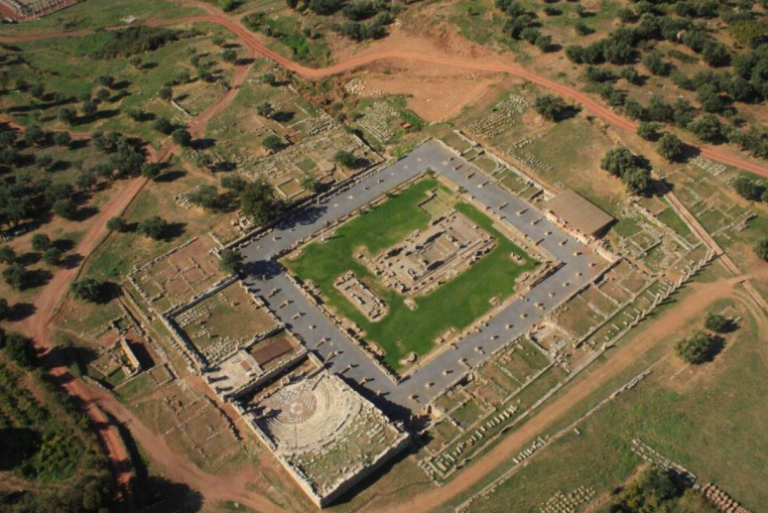The ancient site of Messene is the latest archaeological area to be safeguarded against the threat of fire. The fire protection study, which includes the Messene Archaeological Museum, has been completed. It proposes the installation of a permanent fire-fighting network with a tank and distribution system, covering the entire perimeter of the site, as well as sections of its interior, creating protection zones.
This initiative aligns with the Ministry of Culture’s broader policy to protect archaeological sites and museums from fire hazards, while also contributing to the National Plan for preventing the impacts of climate change on cultural heritage.
Minister of Culture, Lina Mendoni, stated, “The archaeological site of Ancient Messene is the most significant organized and accessible site in Messinia, with a unique collection of restored monuments. Its well-preserved natural environment makes it a cultural and environmental landmark of utmost importance for the cultural and economic development of the wider region. The protection and enhancement of the archaeological site and the Museum are our priorities. This is reflected in the ongoing upgrades to the site’s infrastructure, as well as in the creation of a new Archaeological Museum, the study for which is being conducted by the Ministry of Culture in collaboration with the Region of Peloponnese. Currently, the archaeological site lacks a fire protection network. The only available fire hydrants have proven inadequate, especially given the extreme weather conditions in recent years due to climate change. The newly approved fire protection study ensures the safety of the archaeological site and the Museum. Our main concern is securing the necessary resources for the immediate implementation of this project.”
The Archaeological Museum houses collections of findings from the excavations of the site. Built between 1968 and 1972 and renovated from 1992 to 1998, the two-story building is equipped with active fire protection measures. The approved study addresses the entire building, including the ground-floor storage and the first-floor exhibition space. The museum currently has only one emergency exit at the level where the main activities take place. To address this, additional active measures will be implemented, including the installation of a manual fire alarm system and an automatic fire detection system throughout the museum’s enclosed spaces. Plans also include the installation of safety lighting and signage for escape routes and emergency exits, as well as the placement of portable fire extinguishers. Furthermore, a water-based fire-fighting network with fire hydrants will be installed both inside the museum and in its surrounding outdoor area.
Ask me anything
Explore related questions





